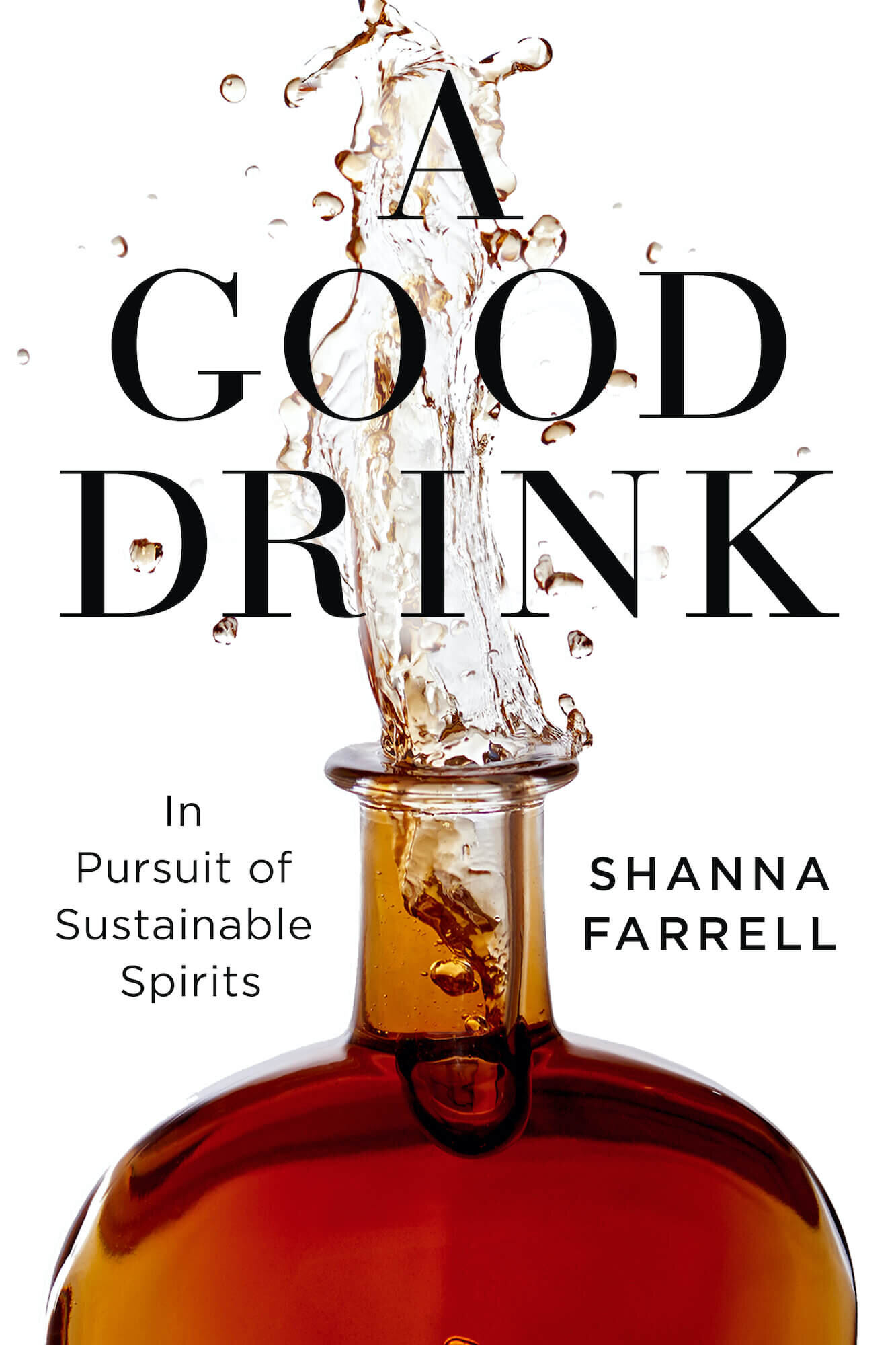Book Review: A Good Drink by Shanna Farrell
Sustainability is one of the top trending subjects in the world of cocktails and spirits, with liquor brands touting their eco-sensitive production practices and sponsoring no-waste cocktail competitions, and cocktail bars serving drinks with dehydrated garnishes and finding second and third uses for their spent citrus husks. Information for bartenders on how to incorporate sustainable practices into beverage programs is sprinkled about the internet, on sites like CocktailGreen (from this writer), Outlook Good from Claire Sprouse of the Brooklyn bar Hunky Dory, and The Trash Collective (formerly known as Trash Tiki), from bartenders Kelsey Ramage and Iain Griffiths. There is a lot going on, but it may be challenging to find a focal point for those new to the issues.
A Good Drink: In Pursuit of Sustainable Spirits by Shanna Farrell is not an attempt to be a comprehensive how-to on sustainability tips and tricks for bartenders nor distillers, but rather a broad exploration of the topic from many angles. By day, Farrell is an interviewer at UC Berkeley’s Oral History Center, and her approach in the book is to tell the stories of people working in sustainability; mostly in spirits production, but also behind the bar.
Inside the Bottle
Farrell introduces us to whiskey distillers who contract with farmers to grow a nearly-extinct variety of heirloom corn and a rum distiller who went to great lengths to ensure her source material was grown and processed as responsibly as possible. We also learn of challenges faced by producers trying to act conscientiously, including tequila producers who have had to deal with gluts and shortages of agave, and brandy distillers who must shift from buying in-state pears in California to sourcing them from Colorado when local farmers dug up their trees to plant more profitable crops.
Further, we hear of distillers who have been able to introduce sustainability measures in production, from the water and energy-saving measures at the mid-sized Leopold Brothers to forest management initiatives at the relatively massive Maker’s Mark. The producers interviewed seem very aware of how much more they could be doing to further lessen their impact on the environment but must balance these wishes against the practicality of selling bottles of liquor at somewhat reasonable shelf prices.
A Closer Look at Ingredients
On the outside of those bottles, Farrell advocates for better disclosure of things like sugar and caramel coloring used to make rum taste older and more premium. She also points out that restaurants that would never serve food with artificial coloring in it often still offer a Negroni with red dye no. 40 as an ingredient.
Near the end of the book, Farrell introduces readers to a group of bartenders (including Sprouse, Griffiths, and Ramage mentioned above) taking the lead in sustainability practices in both luxury and casual bar settings. Again, both successes and practical limitations come into play while pursuing the greater good.
Overall, the book at just 160 pages of text functions as a terrific overview to the ways in which some producers are succeeding at sustainable practices, and the many roadblocks to achieving it for others. It provides to the reader the landscape – better practices in the field, at the distillery, and in the bar. For producers, the book might function as an eye-opener for the range of possibilities toward sustainable practices beyond sticking a few solar panels on the roof of the tasting room. For consumers, A Good Drink might provide inspiration to support brands that are making attempts at sustainable practices, as well as to pressure other ones to be more conscious and/or more transparent; a point emphasized in the conclusion.

